WHERE ARE THEY NOW?: KENNY BERNSTEIN
 From the time he resumed his drag racing career in late 1978 until he retired as a team owner following the 2011 season, Kenny Bernstein had a run of staggering success.
From the time he resumed his drag racing career in late 1978 until he retired as a team owner following the 2011 season, Kenny Bernstein had a run of staggering success.
For the record: Six NHRA championships (four straight in Funny Car, and two more in Top Fuel); the first driver to break the 300-mph barrier (this week in 1992); the only team owner to win in NHRA, NASCAR and CART (now IndyCar); a 30-year sponsor partnership with Budweiser; and on and on and on.
So what’s a guy to do after chasing his dream for that long and setting an astronomical performance bar?
Well, he’s certainly not hanging out at racetracks; anything but, in fact.
Now 75, Bernstein and his wife Sheryl split their time between homes in western Colorado -- they’re legal residents of the Centennial State -- and southern California.
Laying low for now like everyone else on the West Coast due to the COVID-19 pandemic, the Bernsteins lead an active lifestyle that’s the polar opposite of racing’s spotlight. Whenever possible, they power-walk 4 miles a day, and his Fitbit shows that he logged almost 5.5 million steps and 2,409 miles last year.
“Like anyone that retires, it gets a little boring at times in the beginning because you were so busy and traveling so much,” said Bernstein, who’s maintained his racing weight of 155 pounds. “We just kept at it and picked up an entirely different lifestyle.
“We spend the summertime in Colorado from about the middle of May ‘til about Nov. 1. We’re not there in the winter because we don’t care about the snow and cold. We like the summer because there’s hiking, biking, fishing, golf, side-by-side riding -- everything you want to do outside -- and the country is just beautiful. That’s a fun time for us. In California, the weather’s usually halfway decent in the winter. We have the best of two worlds.”
The pounding of racing and sports has led to several surgical procedures. Bernstein’s most recent experience going under the knife was to repair a complete tear in a rotator cuff, an injury he blames on “my wonderful golf swing.”
Bernstein’s drag racing career began when he wheeled both Top Fuel and Funny Car entries throughout the Southwest in the 60s as a young man. He pushed his passion to the side in the spring of 1973 for reasons that seemed blatantly obvious to him at the time.
“I didn’t have the money to do it, and I certainly didn’t have a sponsor to do it the right way. I couldn’t compete with the people I wanted to compete with,” Bernstein said. “I had tried for four or five years with dragsters, and when I drove for people, it was fine. But the Funny Car, even with Ray Alley’s name on it, it was tough. And I just said, ‘I’ve got to go to work, I’ve got to grow up and go to work.’ I ran into the idea of this restaurant thing kind of by accident and got all engulfed in it.”
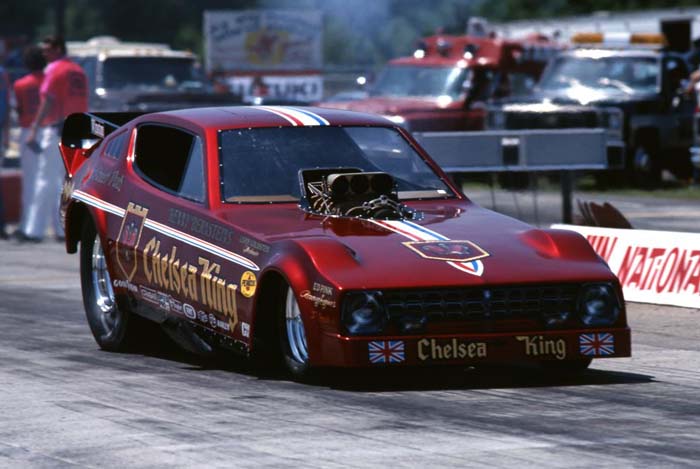 In November 1973, Bernstein and Randy Pumphrey opened the first Chelsea Street Pub in the mall in their hometown of Lubbock, Texas. Bernstein threw himself wholeheartedly into building a successful chain out of it -- 20 of them over five states from late ‘73 to 1979. But a chance meeting with a customer and old friend, “L.A. Hooker” Funny Car owner Gene Beaver, at his restaurant in Dallas rekindled the racing fire in Bernstein.
In November 1973, Bernstein and Randy Pumphrey opened the first Chelsea Street Pub in the mall in their hometown of Lubbock, Texas. Bernstein threw himself wholeheartedly into building a successful chain out of it -- 20 of them over five states from late ‘73 to 1979. But a chance meeting with a customer and old friend, “L.A. Hooker” Funny Car owner Gene Beaver, at his restaurant in Dallas rekindled the racing fire in Bernstein.
“He said, ‘Kenny, why don’t you come go racing with us? I’ve got two cars, we can do an L.A. Hooker II,’ “ Bernstein said. “I said, 'Gene I’ve got plenty to do here.' He said, ‘If you’ll just get a trailer to put it in, everything else will be on me, just drive it. We’ll go up to Memphis and test and we’ll go run Indy.’ That’s all it took. We went to Indy, didn’t qualify -- couldn’t even begin to qualify -- but I kind of got exposed again. The bug bit me.”
Lack of funding a team is what had gotten Bernstein out of drag racing. The ability to afford to go racing in the late 70s, thanks to the success of the restaurant chain, is what funded his return.
“I could afford to take a chance at doing something, but I was only going to do it but one way and that was the best,” he said.
A call to legendary West Coast racer Ed Pink to build a team had a simple directive: It had to be a first-class operation that gave Bernstein a chance to win. That’s when the team and the gorgeous “Chelsea King” Funny Car were born.
“I gave myself one year, 1979. I’ll run the NHRA schedule and some of the IHRA … I’ll continue with the restaurants, but if I can’t get a sponsorship that makes this thing worthwhile or has the potential for that, then I’m going to go back to the restaurants and grow it to about 50-60” outlets.
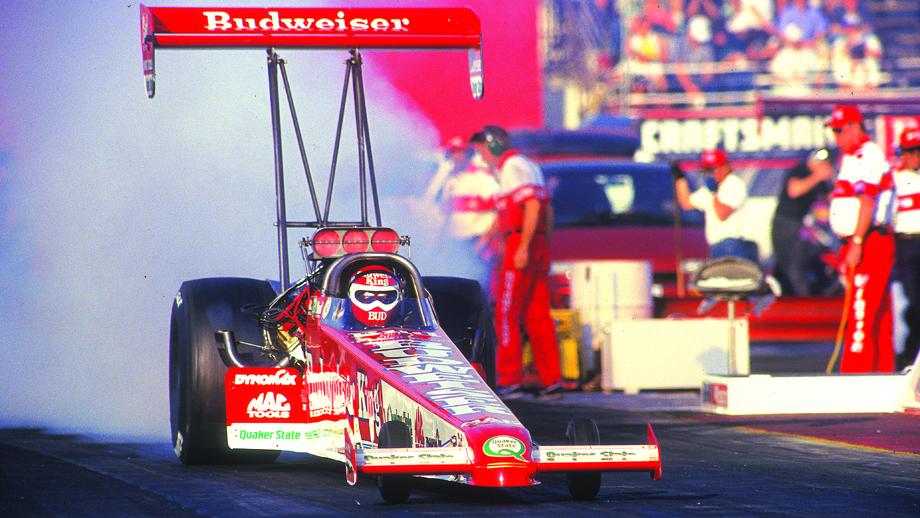 The rest, as Bernstein said, “is history.” He landed the Budweiser sponsorship in late ‘79 for the ensuing season by showing up at corporate headquarters in St. Louis one morning and firing up the car’s engines as a new shift of employees arrived for work. That sponsorship forced him, by law, to sell the chain of pubs, which prospered for another generation under its new owners.
The rest, as Bernstein said, “is history.” He landed the Budweiser sponsorship in late ‘79 for the ensuing season by showing up at corporate headquarters in St. Louis one morning and firing up the car’s engines as a new shift of employees arrived for work. That sponsorship forced him, by law, to sell the chain of pubs, which prospered for another generation under its new owners.
The success of the new “Budweiser KIng” entries took a few years to hit its peak, and the culmination of its performance was four consecutive championships in Funny Car from 1985-89. Bernstein would eventually notch 30 Funny Car victories.
In 1990, he made the move to Top Fuel and would win a pair of titles in that class (1996, 2001) and 39 national events. His 69 victories in those two nitro categories are the sixth most in NHRA professional category history.
Those aren’t the highlights of his career, he said. Rather, it was the March 20, 1992, blast down the Gainesville Raceway quarter-mile that tops the list. That’s the day he became the first racer to crack the 300-mph barrier, and he blew past it at 301.70.
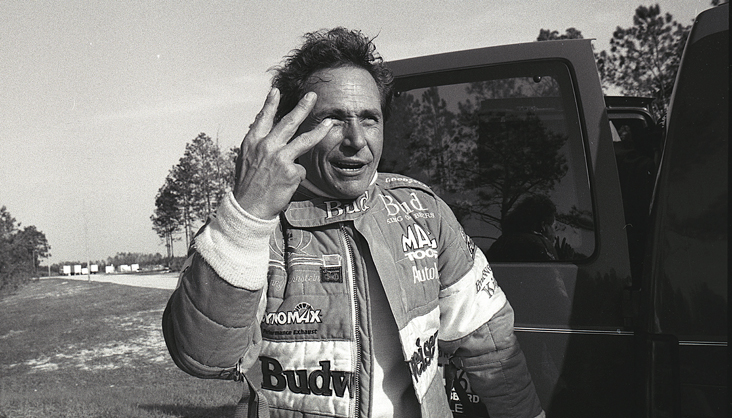 "This is it; this will be the one that people remember," crew chief Dale Armstrong told National Dragster that day. He was right.
"This is it; this will be the one that people remember," crew chief Dale Armstrong told National Dragster that day. He was right.
“It’s amazing. As long as I’ve been out of the sport now, people you wouldn’t think had any idea what you did will come up and say, ‘Hey, it’s Mr. 300!,’ “ Bernstein said. “Dale and the guys did a great job and made it happen.”
Bernstein’s three-decade run with Budweiser was on its final legs not long after the brewer was acquired by InBev. Bud had also been hinting it was ready for a change, too, with Bernstein’s son, Brandon, waiting in the wings as a national-event winner in the Top Alcohol Dragster ranks.
“Basically, Budweiser wanted a plan of attack for the future when I was ready to quit,” he said, “and they made it pretty clear they were trying to get the young people involved. When I got up there in age, maybe it would be time to get Brandon in the car.
“So I had a little bit of pressure on me that way. I think I probably made more out of it than they did, but I did get some pretty good heat at time -- what are we going to do and what’s Brandon’s schedule and all this kind of stuff.”
Kenny Bernstein handed the wheel to his son for the 2003 season. That rookie campaign ended early after a crash at Englishtown, N.J., sidelined Brandon with a back injury. Kenny climbed back in the driver’s seat to finish out the season and won the final four races of the year. Brandon returned as the driver in ‘04.
“I knew I missed driving instantly, no question about it,” Kenny said. “It was hard for me to stand on the outside and watch the car go down the racetrack for a long time. I don’t know if I got over that, really.”
Actually, he didn’t; not then, anyway.
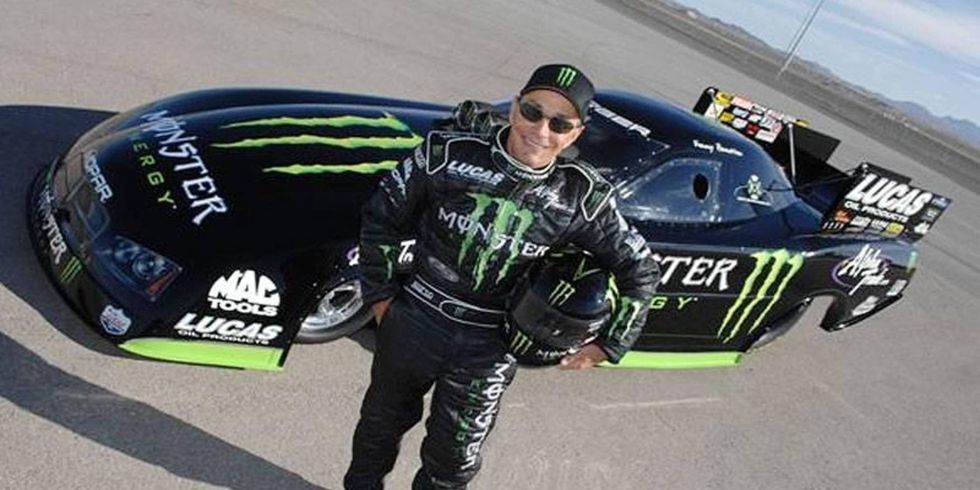 He returned to Funny Car competition in 2007 with a Monster Energy-sponsored Dodge. That lasted for just one season -- he stepped aside and handed the reins to Tommy Johnson Jr. -- and he folded the Funny Car team at the end of 2008.
He returned to Funny Car competition in 2007 with a Monster Energy-sponsored Dodge. That lasted for just one season -- he stepped aside and handed the reins to Tommy Johnson Jr. -- and he folded the Funny Car team at the end of 2008.
When Budweiser’s sponsorship ended after the 2009 campaign, Kenny signed Copart as the team’s primary sponsor for the following season. The company, which collects wrecked cars for insurance companies and resells them, re-upped with a three-year pact for the 2011-13 seasons.
Bernstein said that despite both parties’ best efforts, the sponsorship didn’t result in the kind of return they had hoped to attain. That, and the grind of so many years on the road, began to wear on him physically and mentally, and it came to a head as the 2011 World Finals opened at Pomona.
On the opening day of the event, Bernstein asked Copart president Vinnie Mitz if the company would be interested in ending the sponsorship ahead of schedule. A call to company chairman, Jay Adair, resulted in confirmation of its interest to do so, and by Sunday morning, they had agreed to terms of a buyout.
“And, bam, that was it,” Bernstein said.
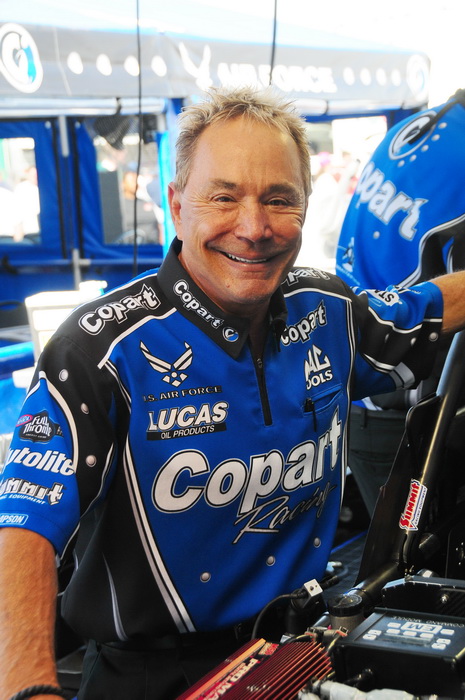 “It was a fair deal for both of us. It saved them a whole lot of money, and it put money in my pocket,” he added. “I took a lot of that money and paid all my employees. I had a big staff -- a monster staff -- and I took care of everybody as well as I could. They had no idea I was going to do this, but I would’ve done this even if I had given them plenty of warning. (Publicist) Susie Arnold had been with me 20-plus years, and other people that had been around a long, long time. I took care of them and helped a lot of them get jobs.”
“It was a fair deal for both of us. It saved them a whole lot of money, and it put money in my pocket,” he added. “I took a lot of that money and paid all my employees. I had a big staff -- a monster staff -- and I took care of everybody as well as I could. They had no idea I was going to do this, but I would’ve done this even if I had given them plenty of warning. (Publicist) Susie Arnold had been with me 20-plus years, and other people that had been around a long, long time. I took care of them and helped a lot of them get jobs.”
It was the end of Bernstein’s long career, but he stayed involved in a different capacity for two more years, when the shop in Indianapolis was finally sold.
“It took us about six or seven months to unload all the hard goods, but we were able to move everything,” Bernstein said. “It was good stuff -- the latest you could get -- and I sold it at a decent price. We had to get rid of that stuff. My words to two or three people that stayed with me were, ‘I can’t eat those rods and pistons, we need to sell them.’ "
He did keep some of his most-prized pieces, but much of the rest of it was donated to the Darrell Gwynn Foundation. The inventory of ‘hero cards,’ T-shirts, engine blocks and cylinder heads, firesuits, helmets, the famous ‘Batmobile’ Funny Car body and more was meticulously cataloged. Gwynn’s father, Jerry, and a few friends drove an 18-wheeler from Miami to California to retrieve more than 7,000 donated items.
“The truck was full, and they actually had stuff loaded up on the back doors,” Bernstein said. “They got good products to sell to the public, they didn’t get junk.”
Bernstein’s only involvement in drag racing since his retirement has been appearances at six NHRA races (two each at Gainesville, Pomona and Indianapolis). He said he helps NHRA “in any way I can” when asked, and he’s a sounding board for those seeking his advice on racing matters and business.
“I enjoy being back at the races to see my friends, by all means, and the fans are phenomenal,” he said. “You don’t forget about the fans, you forget what it was like. It just blew me away how people are just so excited to see you, and they tell you miss you and wish you were still doing it.”
He might still be around as an owner if a single-car team could be competitive against the megateams that rule the nitro categories these days. At the end of the team’s existence, he recognized that his operation was badly outgunned.
“We couldn’t compete with Schumacher and Kalitta and those guys that had three and four cars,” he said. “When NHRA came to me and said they were thinking about limiting the number of cars to an owner and ‘we’re thinking four’s the number?,’ I said, ‘Four? Are you kidding me? Three people own the whole field, come on already. Four is too much; two at the most.’ But they were thinking about John (Force), and he had his girls coming and I understand that.
 “The way I always explained it to NHRA, and anyone else, is with this example: We’ve got a problem with our car, we’re not competing as well as we should and we’re trying everything we know. So I’m sitting in our Monday morning review of the weekend, and it’s the crew chief, the assistant crew chief and me -- or if Brandon’s the driver, it’s him -- and we’re trying to decipher what’s wrong with this racecar. Now, on a Monday morning at Schumacher’s, he’s got four dragsters and four Funny Cars. That’s eight crew chiefs, eight assistant crew chiefs and eight drivers discussing what’s wrong with each one’s car and how they can help each other.
“The way I always explained it to NHRA, and anyone else, is with this example: We’ve got a problem with our car, we’re not competing as well as we should and we’re trying everything we know. So I’m sitting in our Monday morning review of the weekend, and it’s the crew chief, the assistant crew chief and me -- or if Brandon’s the driver, it’s him -- and we’re trying to decipher what’s wrong with this racecar. Now, on a Monday morning at Schumacher’s, he’s got four dragsters and four Funny Cars. That’s eight crew chiefs, eight assistant crew chiefs and eight drivers discussing what’s wrong with each one’s car and how they can help each other.
“Think about that. If eight crew chiefs can’t figure out what’s wrong with a racecar, there’s something wrong. That’s really 16 to 2 because assistant crew chiefs are just about crew chiefs anyway. Just the mechanical side of it alone, you don’t have a chance. We may suffer for six or seven races trying to solve this problem with the car and why it’s dropping cylinders or why the clutch isn’t working or whatever it may be. They get it fixed the next day or even the same weekend at the racetrack.”
Those types of battles, sales pitches that proved fruitless, payrolls and such are just memories these days. While he’s willing to relive his stellar career accomplishments, Bernstein is enjoying the relaxed pace of retirement, and especially because he’s spending it with his wife.
“She’s a sweetheart. I don’t know how she put up with me. It wasn’t hard putting up with her,” he said of their 38-year relationship. “She was a major part of the drag racing business once we got together. As the years progressed, she took care of a ton of stuff: the design work on the paint schemes on the cars, the trailers, the uniforms, the apparel, the licensing for all the companies that wanted to sell our stuff. She designed the trailers with the people up at Featherlite. She did every bit of it, I didn’t look at it. She knew my tastes, and we both wanted it functional but as beautiful as it could be.
“She’s been a gigantic, major contributor to what we accomplished, yeah. My best friend besides being my wife.”






































